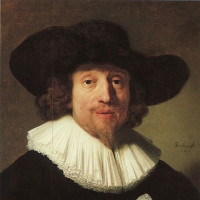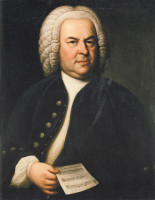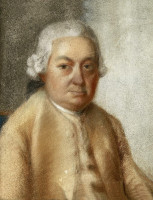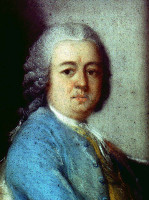What the Bach?
07.10.2025
When you hear the name Bach, chances are you think of Johann Sebastian Bach, the Baroque legend. But what many don’t realise is that J.S. Bach wasn’t the only creative in the family – he came from a veritable army of Bachs, spanning generations of organists, court musicians, composers, and cantors.
Today, we’re diving into a few key members of the Bach clan – Heinrich Bach, Johann Sebastian Bach, Carl Philipp Emanuel Bach, and Johann Ludwig Bach – and mapping out the brilliant, often quirky family connections that made the Bach family one of the most extraordinary dynasties in music history.

HEINRICH BACH (1615-1692)
Relation: Great-uncle of Johann Sebastian Bach.
Claim to Fame: Early Baroque composer and organist.
Think of Heinrich as the elder statesman of the family. Born in the small German town of Wechmar, he was one of the earliest professional musicians in the Bach family and set the tone (pun intended) for generations to follow. He served as organist in Arnstadt, a town that would later become J.S. Bach’s early stomping ground.
Fun Fact: Heinrich’s music is relatively unknown today, but his cantatas and choral works show early Baroque craftsmanship and were probably a major influence on the young Bachs growing up around his legacy.

JOHANN SEBASTIAN BACH (1685-1750)
Relation: Grandson of Heinrich’s brother; great-nephew of Heinrich.
Claim to Fame: Composer of the Mass in B Minor, Brandenburg Concertos, and about a thousand other masterpieces (basically the face of the Baroque era).
J.S. Bach is the star of the family tree. He didn’t invent the Bach musical legacy but he definitely perfected it. Born in Eisenach, orphaned by age 10, and raised by his older brother, J.S. went on to define the high Baroque style with dizzying complexity, spiritual depth, and unmatched musical architecture.
Fun Fact: Johann Sebastian fathered 20 children and several of them became composers.

CARL PHILIPP EMANUEL BACH (1714-1788)
Relation: Fifth surviving son of J.S. Bach.
Claim to Fame: The “Berlin” or “Hamburg” Bach, trailblazer of the Classical style.
C.P.E. Bach came after J.S. and reinvented everything. He was hugely influential in his time. Mozart even said, “[C.P.E] Bach is the father. We are the children.” C.P.E. worked for Frederick the Great in Berlin and later took over his godfather Georg Philipp Telemann’s job in Hamburg. His music bridges the high Baroque and early Classical styles, full of sudden shifts, expressive nuance, and innovation.
Fun Fact: He wrote an entire book on keyboard playing – Essay on the True Art of Playing Keyboard Instruments – that became the gold standard for 18th-century musicians.

JOHANN LUDWIG BACH (1677-1731)
Relation: Second cousin to J.S. Bach.
Claim to Fame: Composer and court musician in Meiningen.
Johann Ludwig was a prolific composer, serving as Kapellmeister (music director) at the court in Meiningen. His sacred cantatas were admired for their structure and emotional depth. J.S. Bach performed Johann Ludwig’s cantatas in Leipzig and even copied them out himself (which has led to some confusion over who actually wrote what).
Fun Fact: For a while, scholars thought some of Johann Ludwig’s works were lost J.S. Bach pieces.
By the time J.S. Bach came along, the Bach family had already been producing musicians for over 100 years. In fact, in 1735, J.S. compiled a genealogical notebook called the Ursprung der musicalisch-Bachischen Familie (Origin of the Musical Bach Family) listing over 50 family members who were professional musicians.
The Bachs weren’t just a family. They were a phenomenon. And through their music, they continue to shape how we understand emotion, structure, and beauty in sound.
So, who was the best Bach? Decide for yourself at our final Baroque Series concert for the year, Bach to Bach.
Bach to Bach
30 October 7.30pm
His Majesty’s Theatre